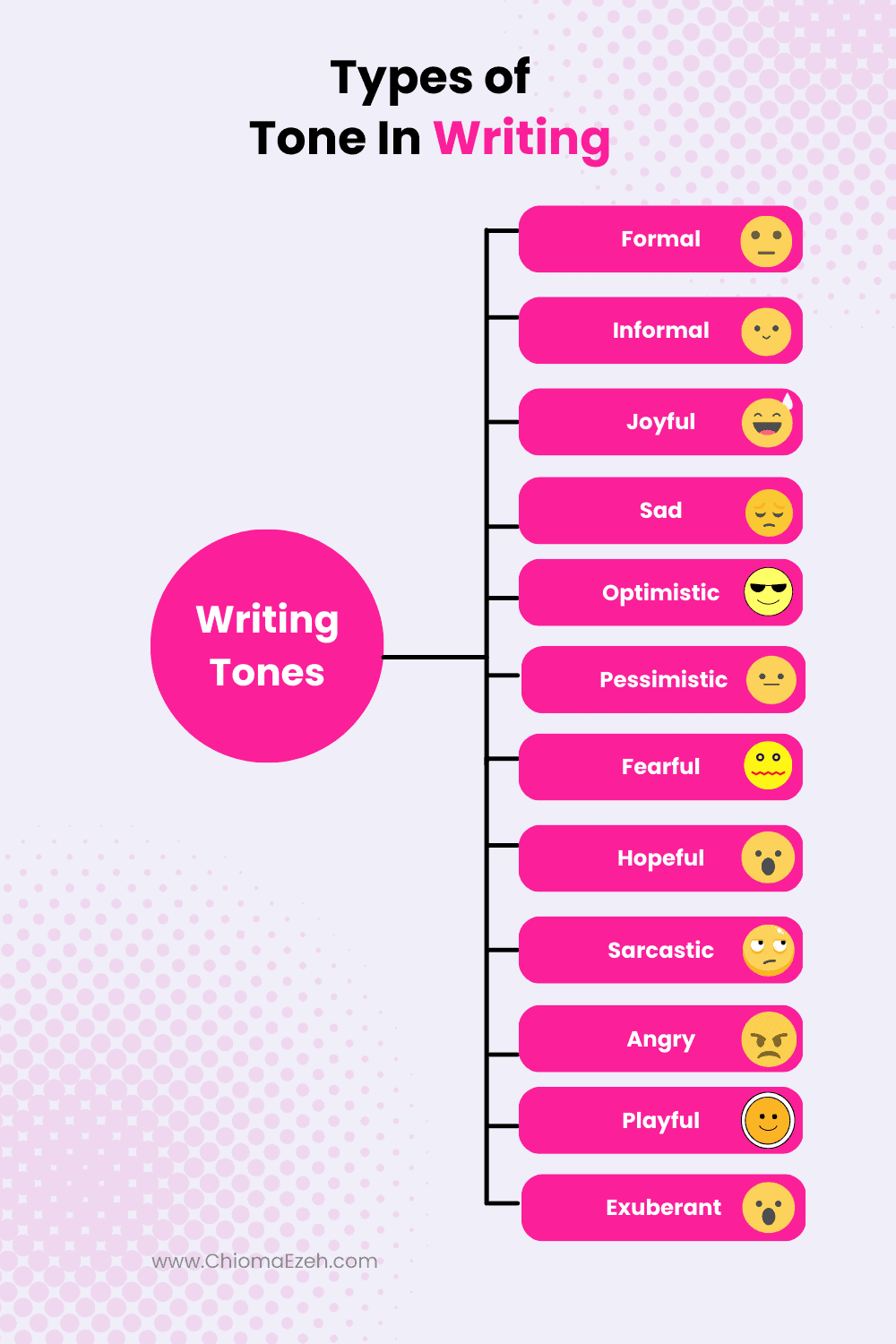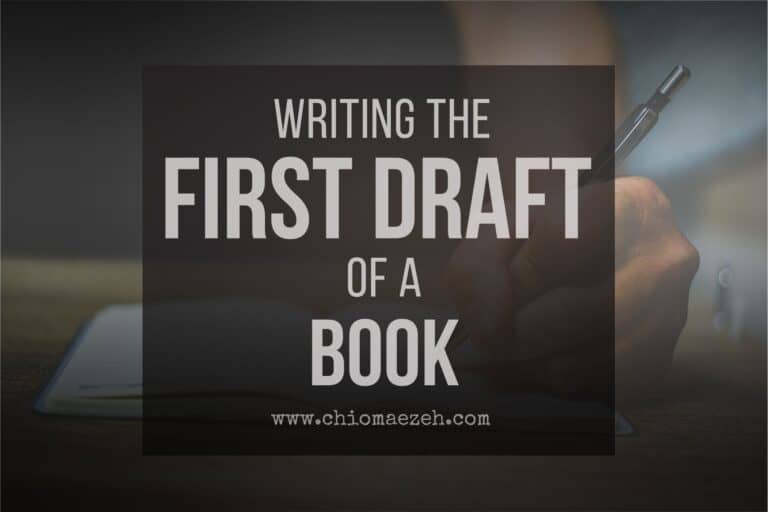Types Of Tones In Writing: 15+ Tones To Use As A Writer
The tone of a piece of writing is an important element of writing. It sets the mood and gives readers an idea of what to expect from the text. Depending on the purpose, there are different types of tones used in writing. These include formal, informal, humorous, sarcastic, sympathetic, and objective tones.
Each type has its own characteristics and should be used accordingly to communicate effectively with audiences. Knowing when and how to use each tone can help writers craft persuasive pieces that will draw their readers in and leave them wanting more.
In this article, we’ll explore some common types of tones in writing so you can get started crafting your messages today.
👉 For a more comprehensive overview, head over to our guide to Tone in writing for authors

Let’s Talk
Are you a writer aspiring to pen a masterpiece that never fails to captivate? Look no further. Reach out to us and uncover how we can help you to take your writing to unprecedented heights!

What Is Tone In Writing?
Tone in writing is defined as the attitude a writer expresses towards their subject matter, audience, and themselves. It can be used to convey a range of emotions, from joy and humor to sadness or fear. It can also be used to sway opinions and persuade others with a convincing argument.
The type of tone used in writing depends on the purpose and audience of the material, but some common types include formal, informal, casual, conversational, sad, joyful, pessimistic, optimistic, hypocritical, fearful, angry, sincere, hopeful, serious, humorous, persuasive and sarcastic.
What Are the Types of Tones In Writing?
Below are the types of Tone in Writing:
- Formal
- Informal
- Casual
- Conversational
- Sadness
- Joyful
- Pessimistic
- Optimistic
- Hypocritical
- Fearful
- Angry
- Sincere
- Hopeful
- Serious
- Humorous
- Persuasive
- Sarcastic
👉If you’re interested in applying these in your writing, read our guide on examples of tones for authors
Types of Tone In Literature
1. Formal tone.
Formal tone is used for official documents and academic writing. It is characterized by an impersonal, polite, and objective attitude. This type of tone should be used when communicating with someone you do not know very well or discussing a serious topic.
2. Informal tone.
Informal tone is more casual than formal writing, but still follows some of the same rules. Informal tone may include colloquialisms, casual language, and even some humor. This type of tone is often used in everyday conversations or writing that is intended for an audience who shares the same cultural background as the author. Examples include conversations and correspondence with friends or family, as well as informal emails or blog posts.
3. Casual tone.
Casual tone is much more relaxed than formal writing and often includes slang or colloquialisms. This type of tone should be used when talking to close friends and family, or when writing a personal blog post or journal entry. It does not necessarily require any specific grammar rules and may be used in text messages, blog posts, and social media content.
4. Conversational tone.
Conversational tone is similar to casual tone, but with more structure and formality. Conversational tone is when the writer takes a personal approach to their subject matter. It allows the writer to connect with their audience in a more intimate way. This type of tone often includes questions, anecdotes, and references to pop culture. It should be used for business emails, work memos, and in other professional settings.
5. Sadness.
Sad tone is used to express feelings of melancholy, loneliness, or despair. A writer uses this tone to convey a feeling of loss or sorrow in their writing. It may include words that have negative connotations or stories about difficult situations. It can be used to emphasize the gravity of a situation and show empathy toward the reader.
6. Joyful.
Joyful tone conveys feelings of optimism and enthusiasm. It may include positive words, optimistic phrases, and colorful imagery. This type of tone can be used to motivate and uplift the reader. It is often used in children’s literature or when expressing excitement about something.
7. Pessimistic.
Pessimistic tone conveys feelings of doubt and discouragement. Pessimistic tone often includes words with negative connotations and stories about difficult situations that have not been resolved. This type of tone can be used to warn readers of potential risks or dangers associated with a certain topic.
8. Optimistic.
Optimistic tone is the opposite of pessimistic tone, and expresses feelings of hope and faith. It may include words with positive connotations and stories about successful outcomes. This type of tone is often used when offering encouragement or support to the reader.
9. Hypocritical.
Hypocritical tone conveys feelings of deceit and dishonesty. Here, the writer expresses opinion that conflicts with their own beliefs. It usually includes words and phrases that are used to discredit a certain opinion or argument. It can be used to emphasize a character’s lack of integrity, or to show disapproval towards someone’s actions.
10. Fearful.
Fearful tone expresses feelings of apprehension and uneasiness. Words with negative connotations and stories about dangerous situations are common. It can be used to show the consequences of a situation or to create tension and suspense.
11. Angry.
Angry tone expresses feelings of rage, indignation, and frustration. Angry tone often includes stories that depict injustice. This type of tone can be used to motivate readers to take action and fight against a certain cause.
12. Sincere.
Sincere tone conveys genuine emotions such as love, appreciation, and kindness. It is often used to communicate a personal message of appreciation or gratitude.
13. Hopeful.
Hopeful tone expresses feelings of optimism and anticipation. Hopeful is when the writer conveys a feeling of optimism and expectation in their writing. It often emphasizes themes and stories about potential success or achievement.
14. Serious.
Serious tone conveys seriousness and importance. It is often used in official documents or when discussing a sensitive topic.
15. Humorous.
Humorous tone conveys feelings of fun and lightheartedness. It can be used to add levity to a situation or to create a humorous anecdote.
16. Persuasive.
Persuasive tone is used to convince the reader of an argument or opinion. It is often used in advertising, sales pitches, and other persuasive writing.
17. Sarcastic.
Sarcastic tone expresses mocking or humorous disapproval. It can be used to emphasize the absurdity of a situation or to express criticism of someone’s actions.
Video Recommendation: Types of Tones In Writing
Final Notes On Types Of Tones In Writing
No matter what type of tone you are aiming for, it is important to remember that your words should always be respectful. The words you choose should reflect the values and beliefs of your audience, even if they differ from your own.
This will help ensure that your content resonates with readers and helps them feel connected to you and your message. Additionally, it is important to maintain a consistent tone throughout all of your writing, as this will create an atmosphere of trust and familiarity for your readers.

![What Are The 10 Rules Of Dialogue Punctuation? [Mandatory]](https://chiomaezeh.com/wp-content/uploads/2023/03/rules-of-dialogue-punctuation-768x512.jpg)

![How Does Dialogue Affect A Story? [Here’s how]](https://chiomaezeh.com/wp-content/uploads/2023/03/how-does-dialogue-affect-a-story-768x512.jpg)


